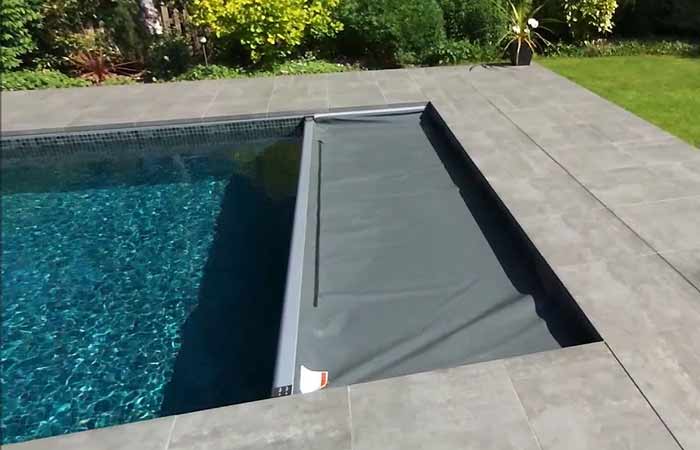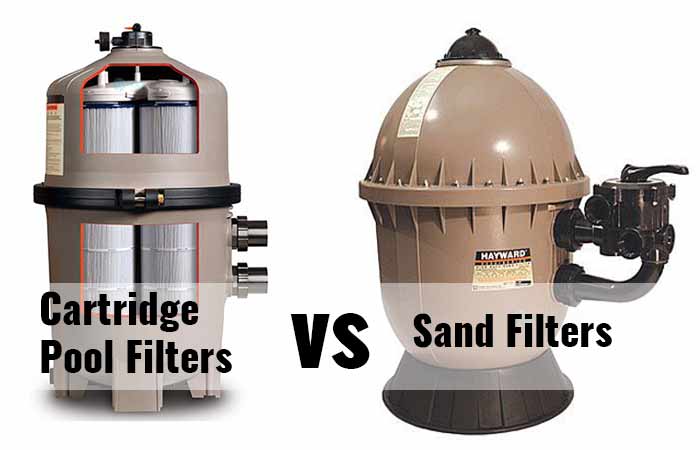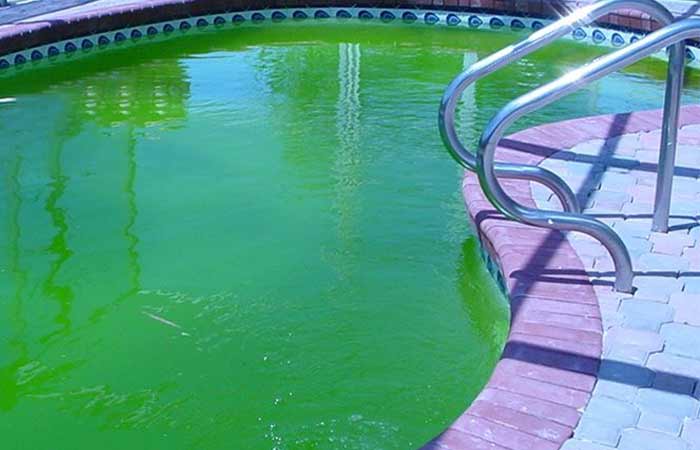How to Shock a Pool-A Complete Guide
To most people, the smell of chlorine in a pool means that the pool has been treated with chlorine and is thus clean. The truth is, however, that a clean pool should have no smell at all. The smell of chlorine in the pool means it’s poorly treated with the smell being from combined chlorine (chloramines). Combined chlorine will form when the chlorine in the pool mixes up with nitrogen from urine, oils and sweat.
The solution to this is shocking the pool. Essentially, you will be adding chemicals (often chlorine) into the pool to increase the amount of free chlorine in the water. The result is that the new chemical state of the water will not be conducive to contaminants such as bacteria, chloramines and algae. Knowing when and how to shock a pool is important to get the desired results.
What is pool shock & what does it do?
Shocking a pool refers to the process of adding chemicals with or without chlorine to the swimming pool to raise the level of free chlorine in the water. Pool shocking changes the chemical state of the pool and makes it non-conducive to contaminants such as chloramines, algae and bacteria. It also helps restore the natural odorless smell of the pool.
You should shock your pool in the following cases:
- When there is a strong chlorine smell
- When the level of free chlorine in your pool is zero
- When algae start growing in the pool
- When the level of combined chlorine (chloramines) rises above 0.5 ppm
Shocking a pool is what is often called treating the pool. You shouldn’t just shock your pool because you’ve sensed a chlorine smell. Rather, getting a measure of the amount of free and combined chlorine is the best way to go about it.
The different types of chlorine in the pool are as follows:
- Free chlorine (FC): the level of chlorine that is actively disinfecting the water. The right level of free chlorine is between 1 and 3 ppm (parts per million).
- Combined chlorine (CC): the amount of chlorine that has already been used. This chlorine is still in the water although it’ll have a lower sanitizing power. The ideal situation is to keep the amount of combined chlorine below 0.2 ppm.
- Total chlorine (TC): the total (sum) of the combine chlorine and free chlorine in the water.
- Breakpoint chlorination: a situation in which there is enough free chlorine in the water to shatter the molecular bonds of combined chlorine.
The pool shocking procedure thus aims to add free chlorine to the water till the breakpoint chlorination level is attained.
How to shock a pool
The process of shocking a swimming pool is a follows:
- Testing the Water
Before you determine whether to shock the pool or not, and how much of the pool shock you will be using, you should test it out first. You will be simply testing the pH levels of the water with a water testing kit.
Ensure that the kit measures the amount of total chlorine and free chlorine in the water. With the total chlorine and free chlorine values, you can obtain the level of combined chlorine by subtracting the free chlorine from the total chlorine. This value helps you determine how much free chlorine you need to add to the pool to reach the breakpoint chlorination level.
- Determine the Amount of Pool Shock Needed
Using the pH values and the amount of free chlorine needed for the pool, check the dosage amount on the pack of the pool shock of choice to determine the amount of the pool shock you will need to restore the pH level of the swimming pool. If you’re using a pool shock that’s not labeled (such as bleach), the procedure is stated below.
- Prepare the Pool Shock
After calculating the amount of pool shock needed for your pool, mix it up in a five-gallon bucket or other fitting container in readiness for the next step.
- Start the Pool Pump
Start the pool pump to keep the water in circulation. Given that the swimming pool is a large water body that can’t be stirred thoroughly with a stick or such other object, you should have the pump do the stirring for you.
- Add the Pool Shock to the Water
Stir the pool shock in the bucket one last time then slowly pour it into the pool around the edges. You should be able to pour it into the pool at least around the whole pool or at the corners to an ensure even distribution of the chemicals in the pool.
- Stir it Up
With the addition of the pool shock to the water, let the water pump run for at least six hours. This is enough time to totally mix the water with the pool shock to attain the breakpoint chlorination level.
- Test the Water Again
After six or more hours, test the water with the water testing kit used above to determine the pH level and the amounts of free chlorine and the total chlorine in it. If you’ve attained the breakpoint chlorination level, the procedure is a success. One way to know this is if the amount of combined chlorine is below 0.2 ppm.
- Wait for the Chlorine to Go Down
Before using your pool again, test it and only use it when the levels of chlorine have dropped to at least 3ppm.
When testing the water after the procedure, always make sure the breakpoint chlorination level is reached. If not, you run the risk of having a higher amount of combined chlorine in the pool than before.
Common Types of Pool Shock and How to Use them
Whether you have a freshwater or saltwater swimming pool, don’t use chlorine tablets to shock your pool as they don’t work. They only serve to change the pH of the water without any other meaningful results.
Some of the most common types of pool shock on the market include the following:
Liquid Chlorine
Liquid chlorine is the most popular type of pool shock due to its convenience and cost-effectiveness. The important aspects about liquid chlorine as a pool shock include the following:
- It’s between 60% and 80% cheaper than granular chlorine shock.
- No dissolving needed as it’s already a liquid.
- It doesn’t scale or leave residue when used.
Liquid chlorine is easy to use and isn’t poisonous hence safe for humans and aquatic life.
Calcium Hypochlorite (cal hypo)
Cal hypo is among the most used types of pool shock thanks to it being convenient and affordable. Most cal hypo is sold as a pack of granules. The important aspects about cal hypo are as follows:
- Should only be used after dusk to avoid the sun.
- For every ppm of free chlorine added to the water, add on average 0.8 ppm of calcium.
- Dissolve it in water before adding it to the pool.
- Leave 8 hours between the time you added the pool shock to the water and the time you use it again for a swim.
Store cal hypo is a dry place to avoid getting damp and wet which reduces it effectiveness.
Sodium dichloro-s-triazinetrione (dichloroisocyanuric acid or dichlor)
While cal hypo is favored for being inexpensive and convenient, dichlor is chosen for being safe and extremely easy to use. The important aspects about dichlor as follows:
- Usable with shock treatments and normal regular chlorine doses.
- For each ppm of additional free chlorine, dichlor adds 0.9 ppm of cyanuric acid.
- Needs 8 hours from the time of using dichlor as a pool shock to using the pool for a swim again.
- Has between 50% to 60% chlorine.
- Can be dissolved right before being added to the pool.
- Only used as a pool shock after dusk (to avoid sunlight).
Dichlor is easily available in shops and has the advantage of remaining effective even when mixed right before being used.
Lithium Hypochlorite
Lithium hypochlorite is a bit costly compared to the rest of the pool shocks on this list. The important aspects about it are as follows:
- Doesn’t add calcium to the water.
- Can be added directly to the pool without being dissolved hence convenient
- Should be used after dusk to avoid sunlight.
- It’s poisonous to aquatic life.
- Dissolves very fast.
- It has about 35% chlorine.
- Use the pool at least 8 hours after using lithium hypochlorite as a pool shock.
Given that lithium hypochlorite affects aquatic life, it’s not advisable to use it often. Use it only as a last resort.
Potassium Peroxymonosulfate
Potassium preoxymonosulfate is among the few pool shocks that don’t have chlorine in them. The aspects to know about it include the following:
- It only needs 15 minutes after shocking the water with it to swim again.
- It doesn’t need to be dissolved before being added to the water.
- Doesn’t kill algae when added to the water.
- Can be used at any time of the day.
If algae isn’t a problem to your pool, this is the most convenient type of pool shock.
With Bleach (sodium hypochlorite)
Household bleach has the same sodium hypochlorite found in pool chlorine although at different concentrations. While the chlorine in the pool has a sodium hypochlorite concentration between 10% and 5%, household bleach’s concentration is between 5% and 6%. The important things to know about using bleach as a pool shock include:
- Use it at dusk to avoid degradation by the sun.
- 1 gallon of bleach shock raises the free chlorine in 30,000 gallons of water by 2.0 ppm.
Can you Shock a Pool without the Pump Running?
The ideal way to shock a pool is when the pump is running. In some cases, you may not have the pump running for some reason or the other. For such cases, stir the water with a pole or other large object to ensure the even distribution of the pool shock.
Pros
- Saves on energy as the pump is off.
- You can focus the shock on the most affected areas such as those with algae growths.
Cons
- The shocking isn’t effective as the mixing of the water and the shock isn’t thorough.
- Algae can grow back as they aren’t cleaned out by the pump.
If the pump is in working condition, always use it to effect the shocking process.
How long Should you Run Filter after Shocking Pool?
After adding the pool shock to the water, the filter pump should be run for at least 8 hours. This is enough to clean out the dirt such as the dead algae and properly mix up the shock in the pool.
What is the Time of Day to Shock Pool?
For most types of pool shocks, the best time is at dusk or towards morning. The aim is to avoid the sun as sunlight disintegrates the chlorine in the shock. As such, shocking the pool during the day is less effective.
Can you Overshock a Pool?
You can’t overshock a pool although too much chemicals in the water can be harmful to your body.
How long after Shocking a Pool can you Swim?
Most types of shock pool will require that you swim in the pool after at least 8 hours from the time of shocking it. The factors determining this period include the following:
- The type of pool shock used: some pool shocks require as little as 15 minutes to swim again.
- The amount of pool shock used.
- Whether you shocked the pool with the pump on or not.
What happens if you Swim in a Shocked Pool?
The chemicals added to the pool to shock it can be dangerous to the skin, eyes and other parts of the body if they come into contact with your body. Chlorine chemicals can damage the eyes as they’ll irritate them once in contact.
Always have first aid for any painful or itchy areas after using a shocked pool to avoid further injuries.
How often to shock Pool?
You need to shock your pool at least once a week. the factors that determine how often you should shock your swimming pool include the following:
- The frequency of use: the more you use the pool, the higher the frequency of shocking the pool.
- Water level changes: if the water level changes significantly or frequently, you should shock the pool more often.
- The weather: turbulent weather such as a rainstorm or others require that you shock your pool more often.
- Dirt in the water: if there’s dirt in the water on a frequent basis, you need to increase the frequency of shocking the pool. This also includes cases where someone relieved themselves in the water.
Generally, the cleaner the pool is, the lower the shocking frequency needed.
Further Reading






